Best things to do in Orvieto
Tucked up in the center of Italy on a spectacular volcanic plateau, Orvieto is a fascinating medieval town that entices visitors with its rich past, magnificent architecture, and enchanted atmosphere.
Tucked up in the center of Italy on a spectacular volcanic plateau, Orvieto is a fascinating medieval town that entices visitors with its rich past, magnificent architecture, and enchanted atmosphere.
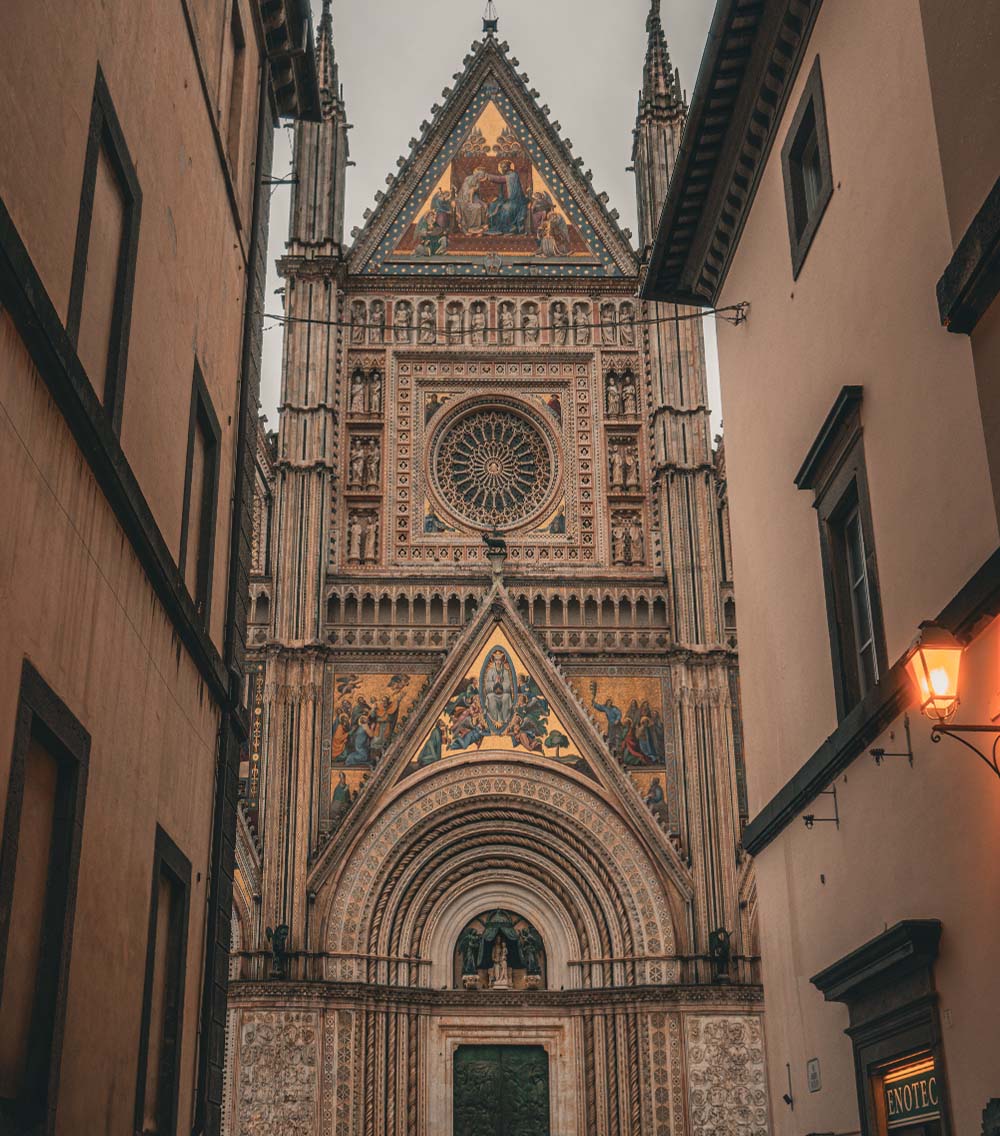
Orvieto has a special fusion of natural and cultural features, well-known for its magnificent cathedral, elaborate subterranean tunnels, and delectable regional food. You will have an amazing time whether you wander through its cobblestone alleys, sample the famous Orvieto Classico wine, or take in the wonderful views of the Umbrian countryside. Explore our guide to find out what to do in Orvieto and begin organizing your trip to this enchanted place.
The history of Orvieto begins with the Etruscan culture, which thrived in central Italy before the Roman Empire’s ascent. Up until the Romans conquered it in the third century BCE, Orvieto (Velzna to the Etruscans) was a prominent Etruscan city situated on a strategically important volcanic plateau.
Growing in stature during the Middle Ages, Orvieto developed into a formidable city-state. With work on its most famous structure, the Orvieto Cathedral, which showcases the city’s richness and cultural legacy, starting in 1290 and lasting over three centuries. Popes often sought sanctuary in Orvieto throughout the 13th and 14th centuries.
Through several wars in Italian history, the town’s strategic position and strong defenses made it a vital military and political center. With its historic ruins, medieval buildings, and lively regional customs attracting tourists from all over the globe, Orvieto is now renowned for its extensive cultural legacy.
Underground City: Underneath Orvieto is a maze of more than 1,200 wells, tunnels, and caverns, many of which are Etruscan in origin. The many uses for these subterranean areas included storage, safety, and even integration with an advanced water management system.
Orvieto Classico Wine: The town is well-known for its centuries-old, locally made white wine, Orvieto Classico.
Unique Festivals: Among the lively events held in Orvieto are the Umbria Jazz Winter Carnival and the Palombella, a Pentecost ceremony in which a white dove descends on a wire from the church tower to represent the Holy Spirit.
Medieval Wells: Orvieto has many medieval wells that were essential to the town’s water supply.
Olive Oil Production: Orvieto is well-known for its excellent olive oil.

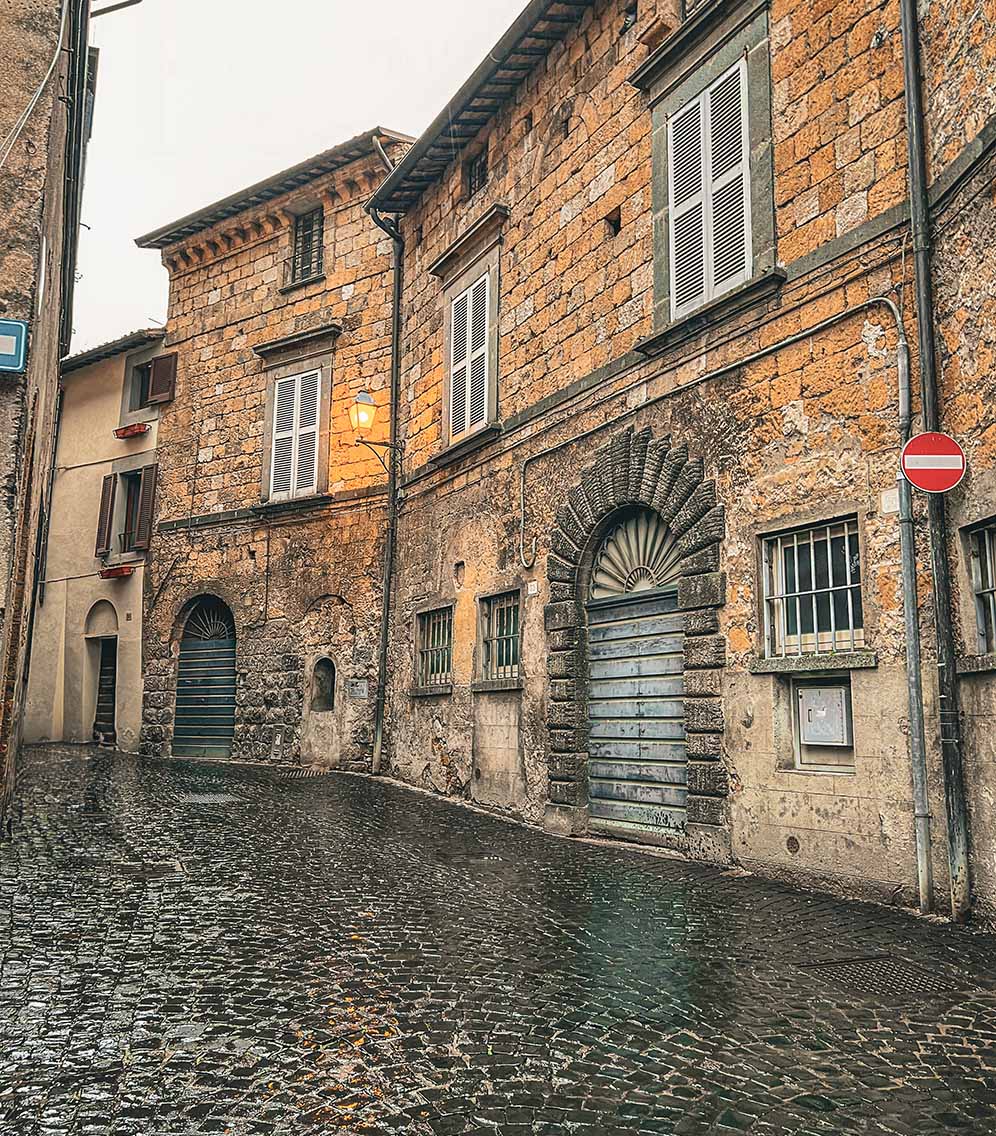
Orvieto is easily accessible by automobile. For the center, which is around 4.5 kilometers from the A1 highway, exit straight at the Orvieto toll booth and comply with the signs. About one hour and forty-five minutes separate the city from Rome.
Taking the Orvieto exit off the major regional route E 45 (which goes from Perugia to Assisi), you will be in Orvieto in about 30 minutes. The same E 45 route makes it easy to reach other major Umbrian cities such as Perugia, Assisi, and Terni.
Arriving at Orvieto from the south, the Cassia road (Viterbo-Rome) slopes from the Buonviaggio-Villanova villages and offers a nice view of the city.
Orvieto is serviced both urban and extra-urban by Busitalia and Cotral, two local bus operators. These services also enable you to see neighboring cities including Bolsena, Viterbo, Porano, Allerona, Acquapendente, and Civita di Bagnoregio.
Next to the funicular and in the direction of the train station lies Piazza Matteotti, home of the bus hub station. Situated a few steps beneath the train station at Piazza della Pace, is the tourist bus parking lot.
Orvieto is well-served by train, being situated on the Rome-Florence-Milan route. Piazza Matteotti in Orvieto Scalo has funicular, bus, and rail stations.
The rail station in Orvieto is situated on a significant line that passes through important towns like Florence, Arezzo, and Bologna on its way from Rome to Milan. One can easily catch the train from the city to Florence (around two hours) and Rome (one hour).
The major airports nearest to you are Rome (Ciampino and Fiumicino / Leonardo da Vinci). About 1.5 hours separate Orvieto from Rome (Fiumicino) on the A1 highway. An alternate airport, almost an hour away, is Perugia “San Francesco da Assisi” (in the Sant ‘Egidio district), which mostly handles low-cost carrier flights.

The best way to experience Umbria is to rent your own car! We recommend booking well in advance using price comparison sites like rental cars if traveling in the peak summer season.
In Orvieto’s center, there are street spaces and public parking spaces available for visitors.
Blue lines delineate Orvieto visitor street parking spaces. These are “pay parking only” locations; the hourly fee is €1.50 (subject to alteration and can vary by location) until 10:00 p.m.
The primary parking lots of Orvieto are listed below. Usually situated on the side of parking lots, the gray parking ticket machines require payment:
Piazza della Pace: There is charged parking for sightseeing buses (€45.00 per day) and free parking for automobiles in a large lot underneath the train station.
Campo della Fiera: Slightly a walk from the historic center, this parking lot is next to the medieval walls.
Piazza Cahen: Easy access to the upper town is provided by being next to the funicular station.
Silos di Orvieto: Secure covered parking is available close to the city center in a multi-story parking structure.

Pope Urban IV ordered the building of this enormous Roman Catholic church in the fourteenth century. It is reported that as a priest was traveling by this location, he saw the altar within was bleeding and that its garments were completely bloodstained. The cathedral currently houses the stained cloth carefully.

The well was built by Antonio da Sangallo the Younger to to provide water during a siege.
Because of its closeness to Rocca Albornoz, this well was once referred to as the “Pozzo della Rocca”. Then the well-known story of the Irish saint and the fabled cave where the saint retreated to pray were associated with the modern name of St. Patrick. The well honors this occasion annually on St. Patrick’s Day, when it is lit up with green lights.
As you make your way down the helical ramps, you’ll be greeted by 70 windows that illuminate the descent, casting a soft glow on the ancient stone. The atmosphere is both serene and contemplative, inviting you to reflect on the historical significance of this place.
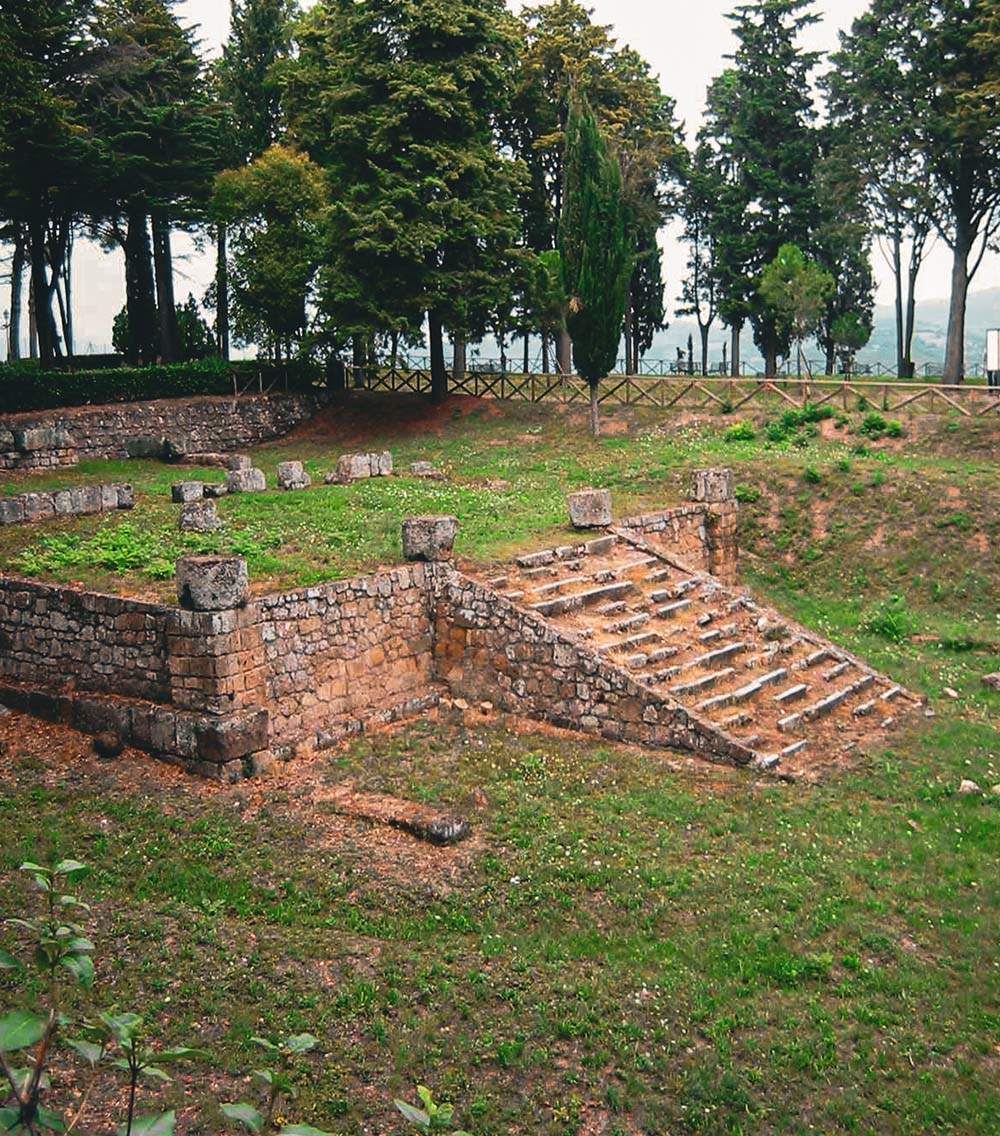
The ruins of the Temple of Belvedere are situated right before Piazza Cahen, next to Saint Ptemple. The area is in a lush, shaded spot and there is a nice stroll around the cliff.
The columns and stairs of the Temple are still visible. Most likely constructed of wood, the remaining portion of the temple has been lost to time. Today, the Museum Faina on Piazza Duomo displays several significant temple remains.
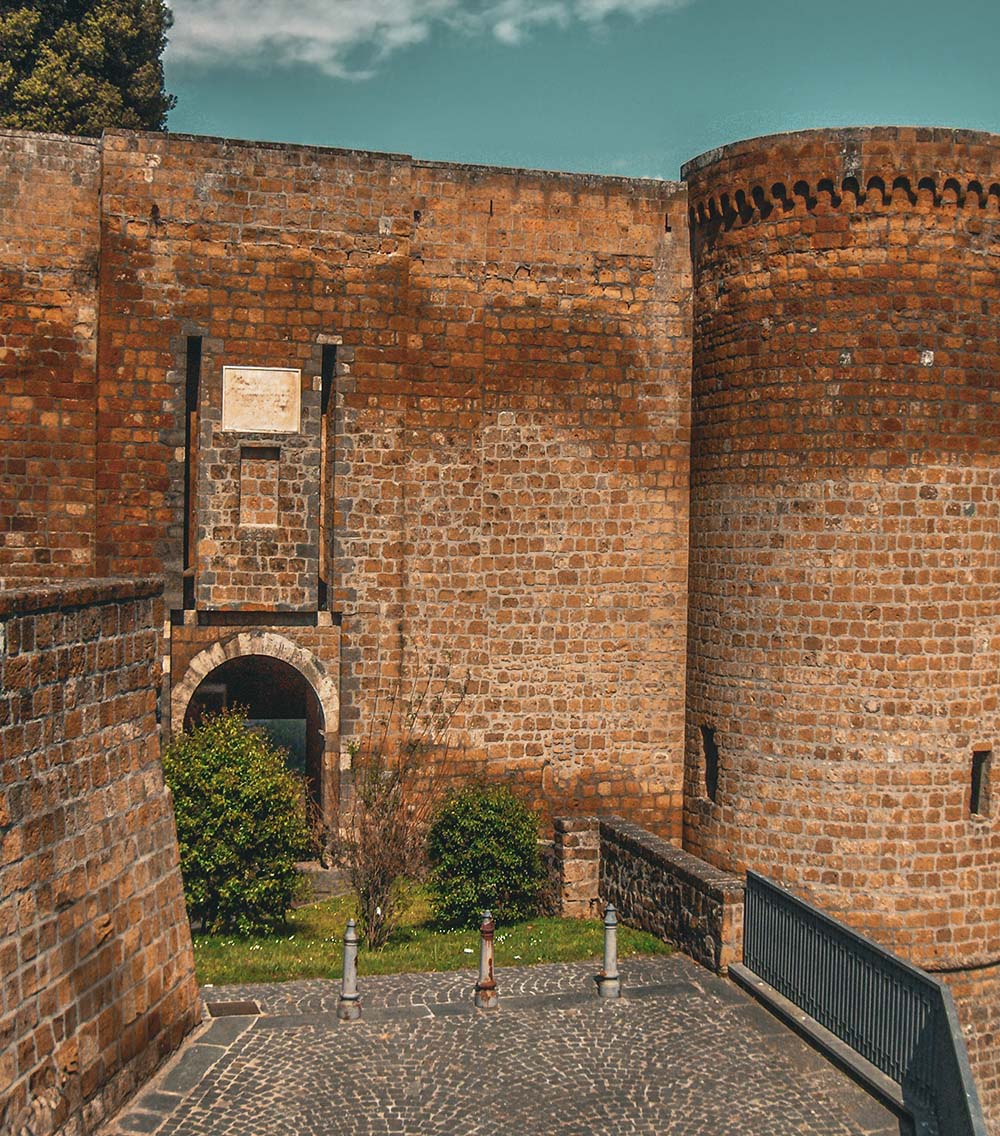
Albornoz Fortress, named after Cardinal Albornoz, who is credited with building it in the second part of the 14th century, is located on the best point of Monte di S. Sergio in Urbino.
Constructed for defensive reasons, it was destroyed and rebuilt several times throughout the ages. The central area of the fortress has been transformed into a public park, providing a peaceful environment for strolls.
Albornoz Fortress is open to the public 24/7 and free to visit. It is conveniently located near the funicular station, making it easily accessible for tourists arriving in Orvieto.
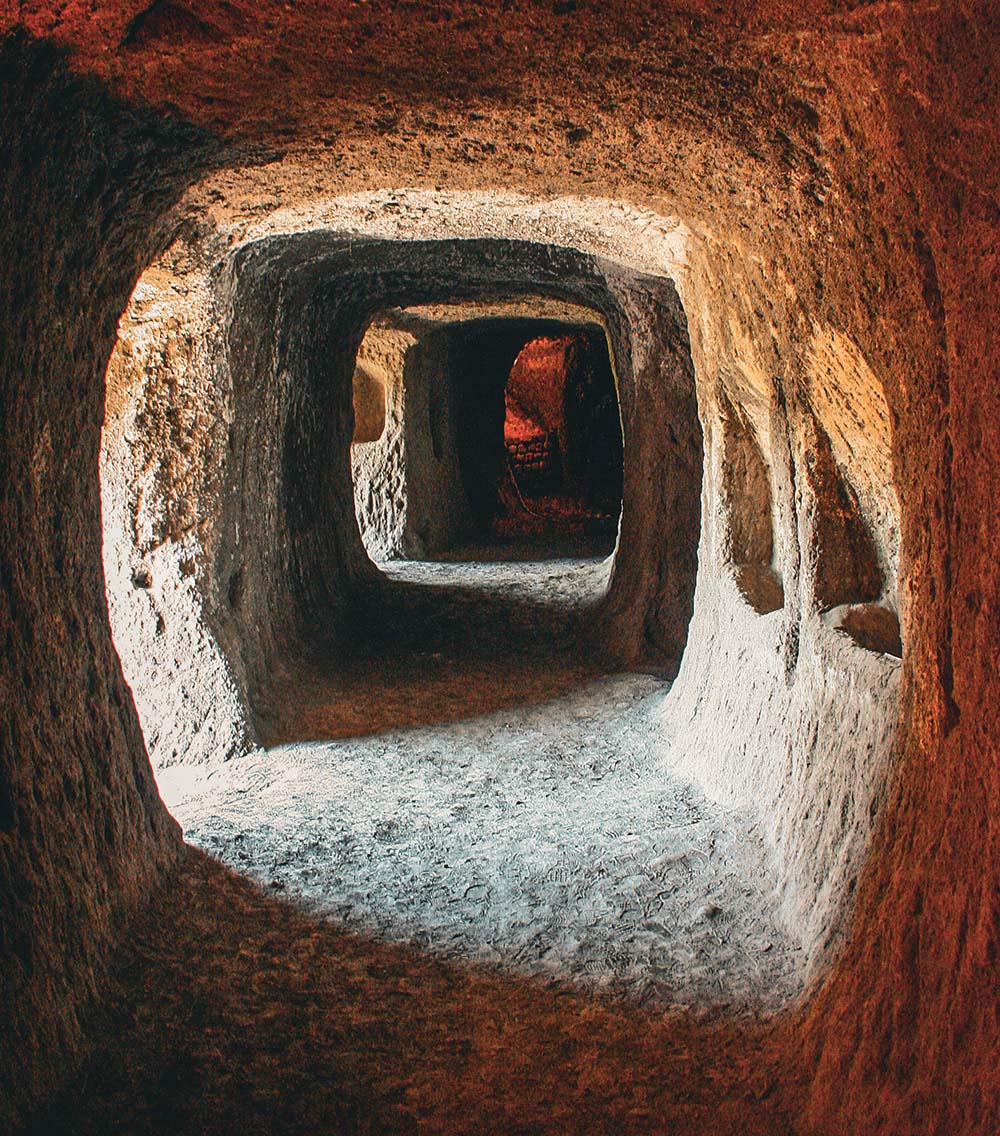
Beneath the streets of Orvieto lies a labyrinth known as the Orvieto Underground, a hidden gem that you must see if you are visiting Orvieto.
This subterranean network, carved over 2,500 years, consists of more than 1,200 caves, tunnels, and cisterns, where people used to live.
The caves have served various purposes over the centuries, from storage spaces to living quarters, showcasing the ingenuity of Orvieto’s inhabitants in utilizing the unique geological features of their environment.
The entrance to the Orvieto Underground is located at Via del Duomo, near the Piazza del Duomo.
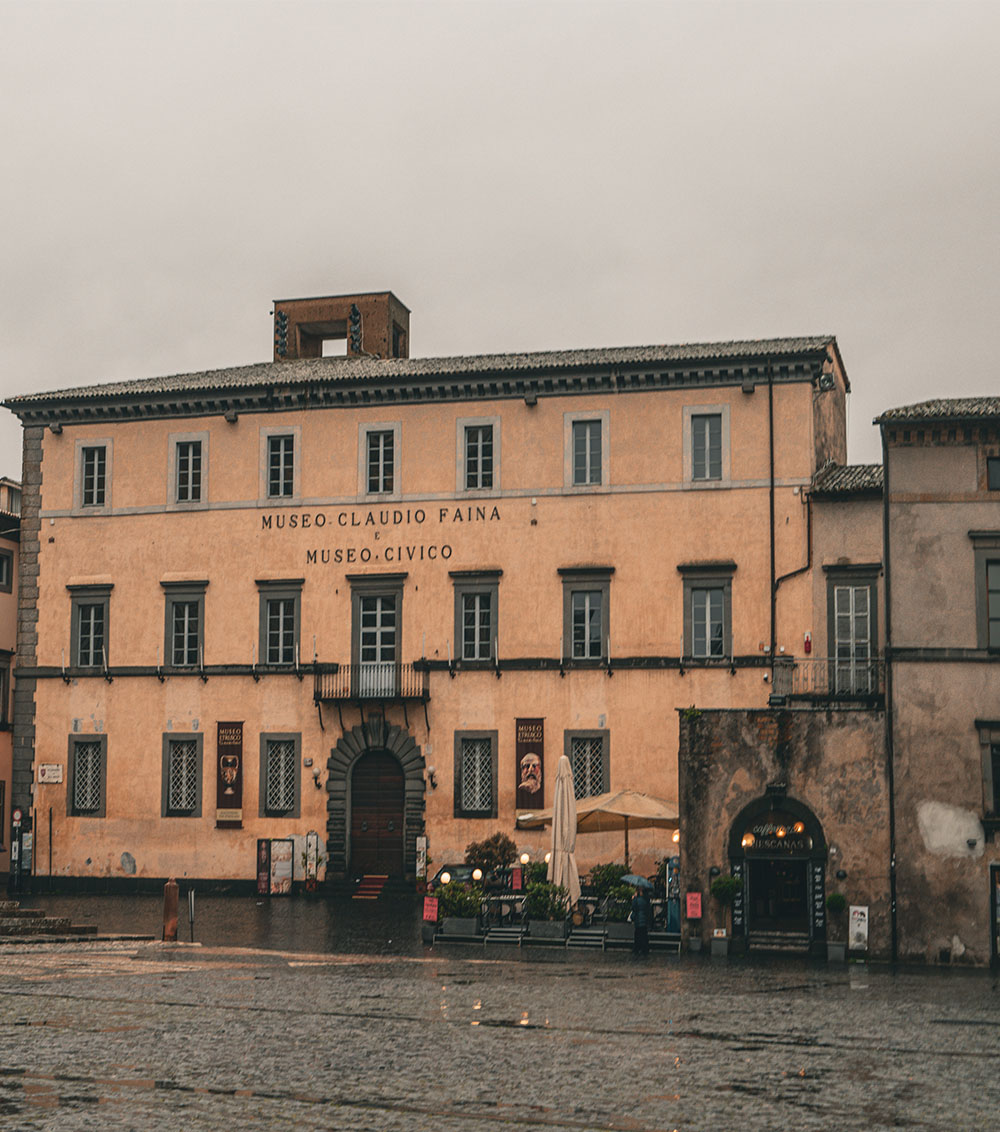
The Museum “Claudio Faina” houses significant Italian archaeological collections. Among the items are a coin cabinet holding over three thousand coins, prehistoric and protohistoric artifacts, buccheri, Etruscan-figured ceramics, bronzes, and jewelry.
The Museo Civico, on the ground level, displays the antiquities that the City of Orvieto gathered in the nineteenth century, including the “Venus” of Cannicella, the cippus shaped like a warrior’s head, and the sculptured embellishment of the Temple of Belvedere’s pediment.
The Orvieto Cathedral is just across from the museum.
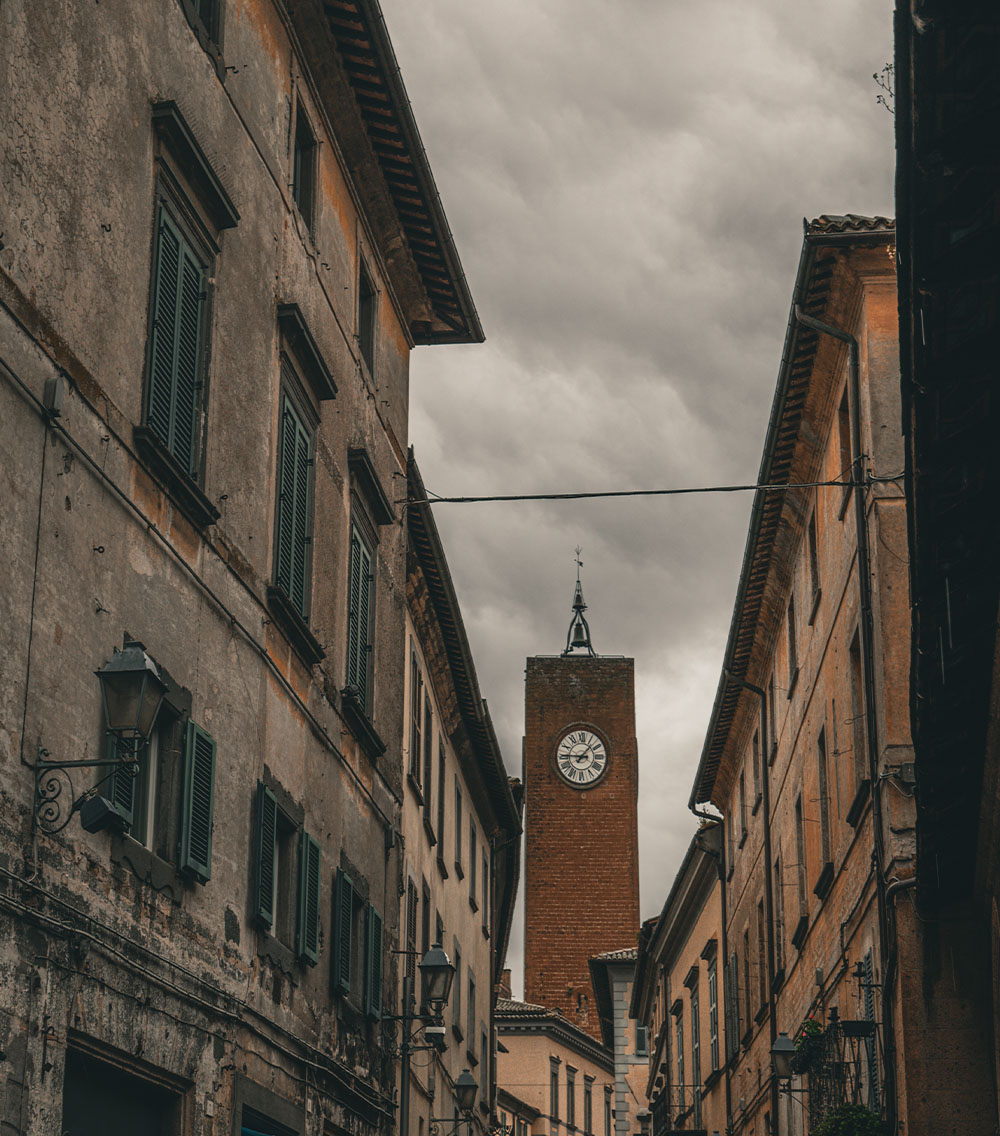
Torre del Moro is approximately 47 meters (154 feet) high and dominates the skyline of Orvieto. Constructed in the early 13th century, this impressive tower served as a watchtower, allowing the city to oversee the surrounding territory during turbulent times.
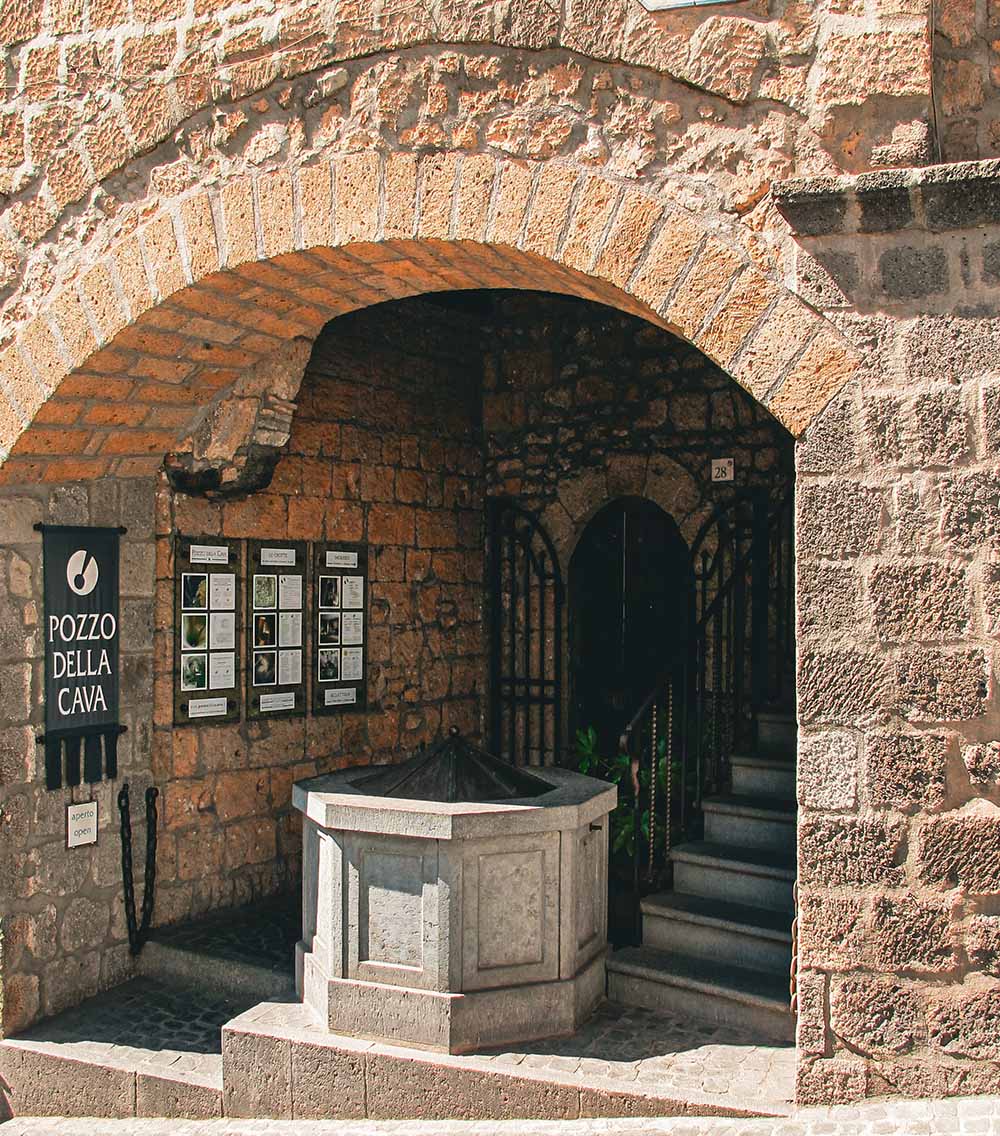
Pozzo della Cava is a well, excavated entirely from the tufa rock beneath the city. The well reaches a depth of 36 meters (about 118 feet) and consists of two interconnected sections: a circular Renaissance shaft and a smaller rectangular Etruscan shaft.
There is a series of caves surrounding the well. You’ll encounter butti, small medieval pits for waste disposal, and remnants of Etruscan burial tombs.
The underground rooms served to produce and preserve the famous Orvieto wines. Some staircases even repurpose Etruscan cisterns designed to collect rainwater.
At the end of your visit, you can relax in a charming outdoor courtyard surrounded by medieval cliff houses.

Piazza della Repubblica is one of the most significant squares in Orvieto, located at the western end of Corso Cavour. Surrounded by a blend of historical buildings, Piazza della Repubblica showcases the elegant Palazzo Comunale, which houses the city hall. The square also features the Church of San Andrea.
The square is the perfect spot to relax, enjoy a coffee, and watch the world go by while taking in the stunning architecture that surrounds you.
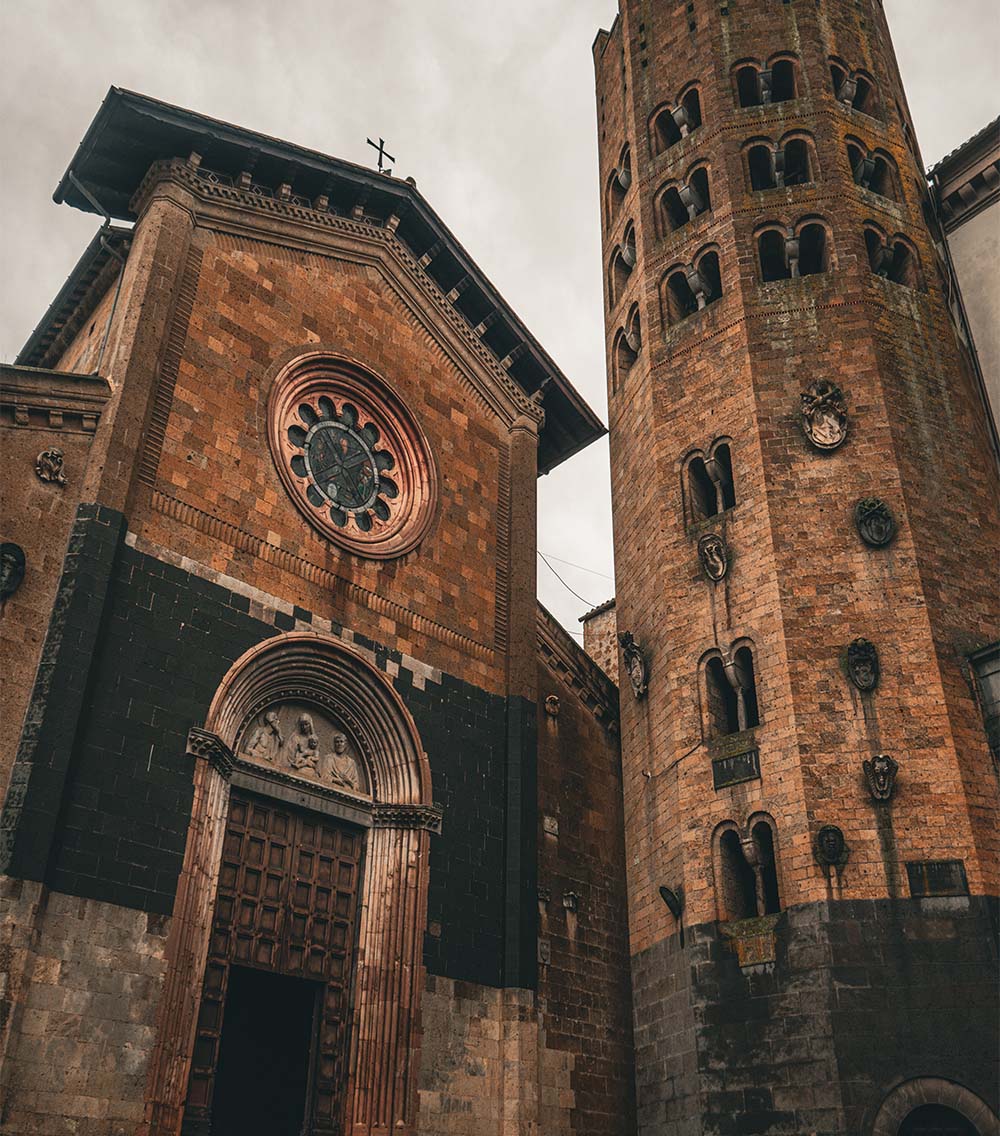
This church, which is situated adjacent to the Town Hall in the stunning Piazza della Repubblica, has seen huge architectural alterations over time. Its stunning façade is now surrounded by a twelve-sided tower that resembles the tower of La Badia, which is situated just off the coast of Orvieto. This cathedral hosted the selections of cardinals and Pope Martin IV, Nicholas IV, and Boniface VIII throughout the Middle Ages.
Remains of an Early Christian church and old Etruscan and Roman structures may be found in the church basement. YOu can book a guide to see the basement if you like. Modern additions to the front during the most recent renovation included the stained glass of Ilario Ciaurro’s rose window and the sculptures of the doorway.
Hadrian’s Labyrinth is a network of tunnels and caves that contains a series of interconnecting cavities, including ancient cisterns, silos, and Etruscan tunnels. There is an underground city, where the soft tufa rock has been skillfully carved into a fascinating array of sculptures and artworks that tell the story of Orvieto’s past.
The tunnels had practical purposes, such as water storage and food preservation. You can make a self-guided tour of the labyrinth, where informative panels provide insights into the various features.
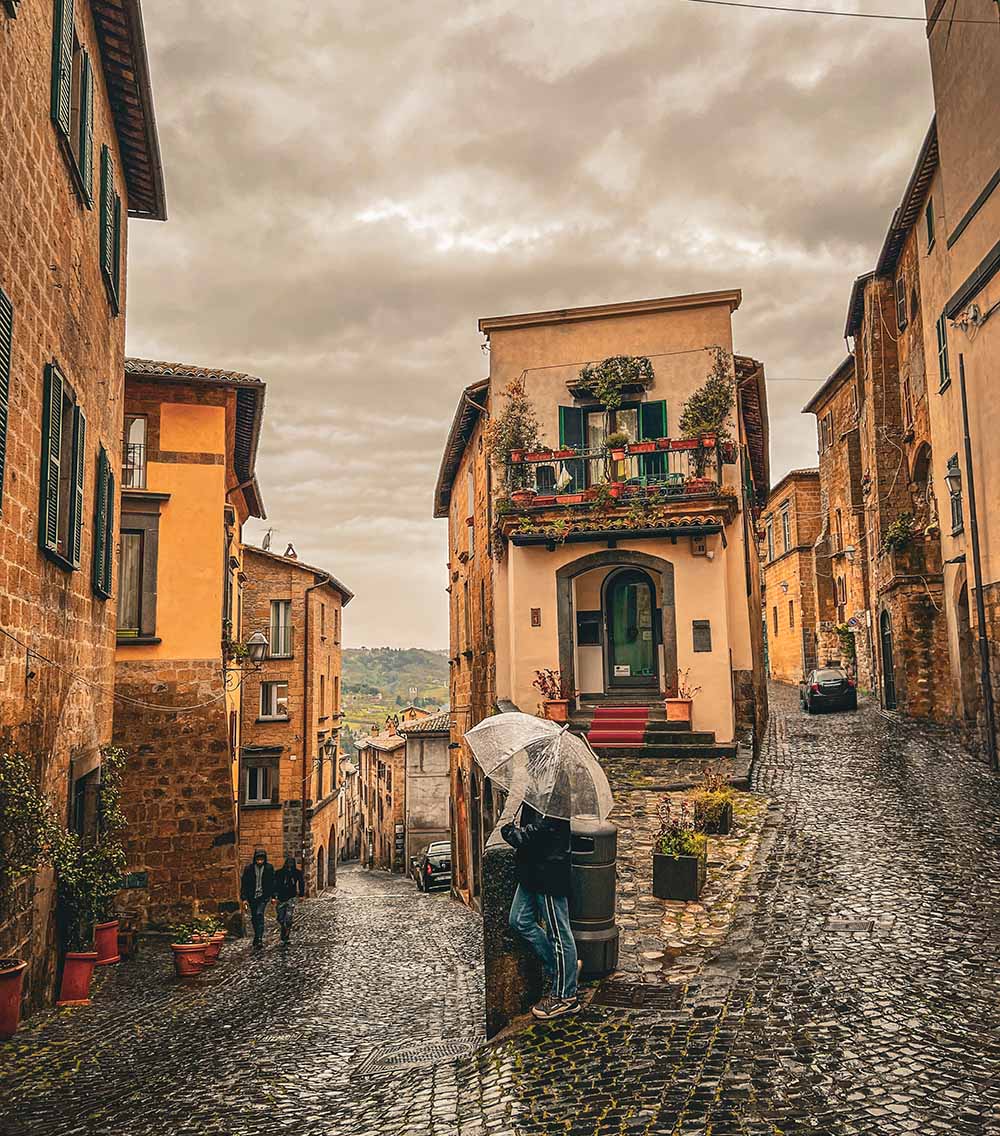

Walking around the side streets is one of the most enjoyable things to accomplish in Orvieto. Explore little, twisting roads that lead to vistas of Umbria and the nearby countryside by straying off Corso Cavour.
The Church of San Giovenale is the oldest church in Orvieto, dating back to 1004. Located on the edge of a cliff in the medieval district, this Romanesque structure was built on the ruins of an ancient Etruscan temple, likely dedicated to Tinia, the Etruscan equivalent of Jupiter.
The tall bell tower, which enhances the church’s fortification appearance, also served as a lookout point, emphasizing its strategic location at the northwestern edge of the city.
While you are there, you can enjoy not only the artistic treasures within but also the stunning views of the surrounding Umbrian hills from the small square in front of the church.
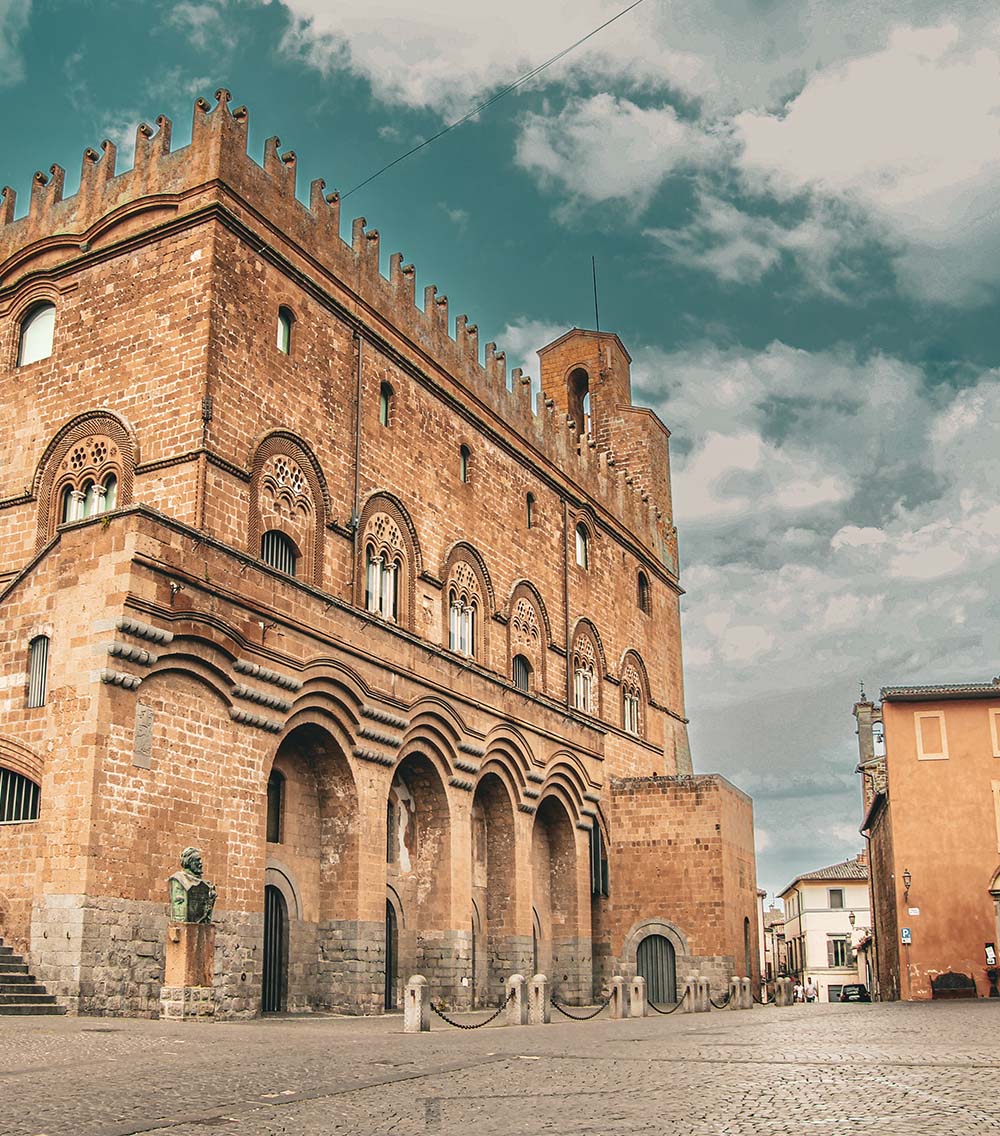
Palazzo del Popolo (Palace of the Captain of the People), was the institutional seat of the Capitano del Popolo, a figure of great importance in Italian municipalities at the time.
Today, the palace is no longer open to the public, but you can admire its beautifully restored exterior, which includes a large external staircase and a bell tower added later on. The tower once housed a famous bell with symbols of the 25 arts and crafts, now located in the nearby Torre del Moro.
Although no longer accessible inside, it remains a must-see attraction if you are exploring the city.
Bolsena is associated with the religious occurrence known as the Miracolo di Bolsena and has Etruscan roots with Orvieto. Bolsena is a small but highly popular tourist destination these days, drawn to the lake as well as cultural sites like the magnificent Basilica di Santa Cristina and the Museo Territoriale, which contains Castello Monaldeschi.
Catch the SS Cassia Montefiascone-Viterbo from Orvieto. Driving through the rural Lazio, you will come to Montefiascone. Seeing the church and the stunning Rocca dei Papi fortification, which offers breathtaking views of Bolsena Lake, is well worth stopping. A further fifteen minutes drive separates Montefiascone from Viterbo.
The historic medieval neighborhoods of Piano Scarano and San Pellegrino, Santa Rosa’s house, and the magnificent Palazzo Papale are just a few of the attractions in Viterbo. Terme dei Papi is a naturally hot sulfur spring just outside of the city, so pack a swimming suit. Bullicame, dotted with natural pools, is a public area.
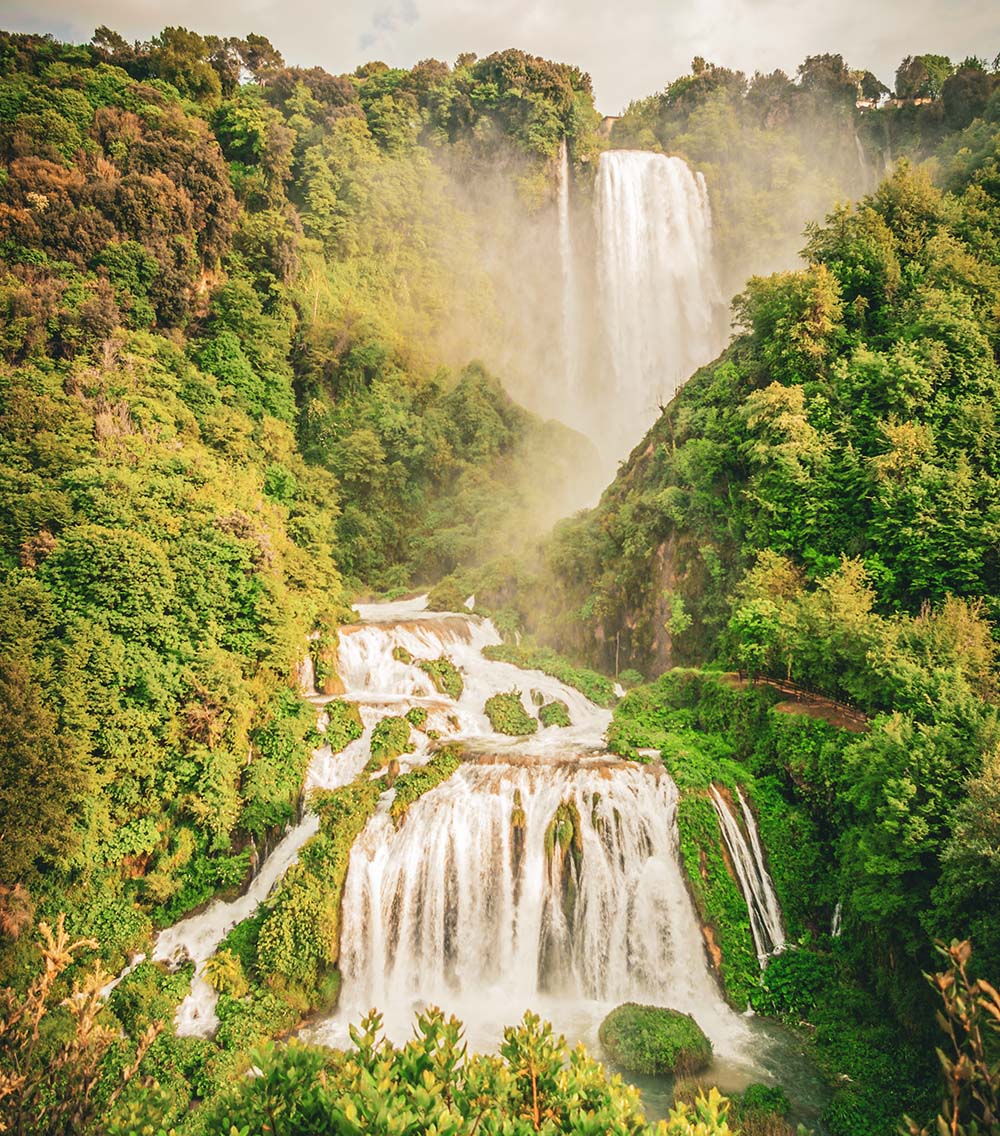
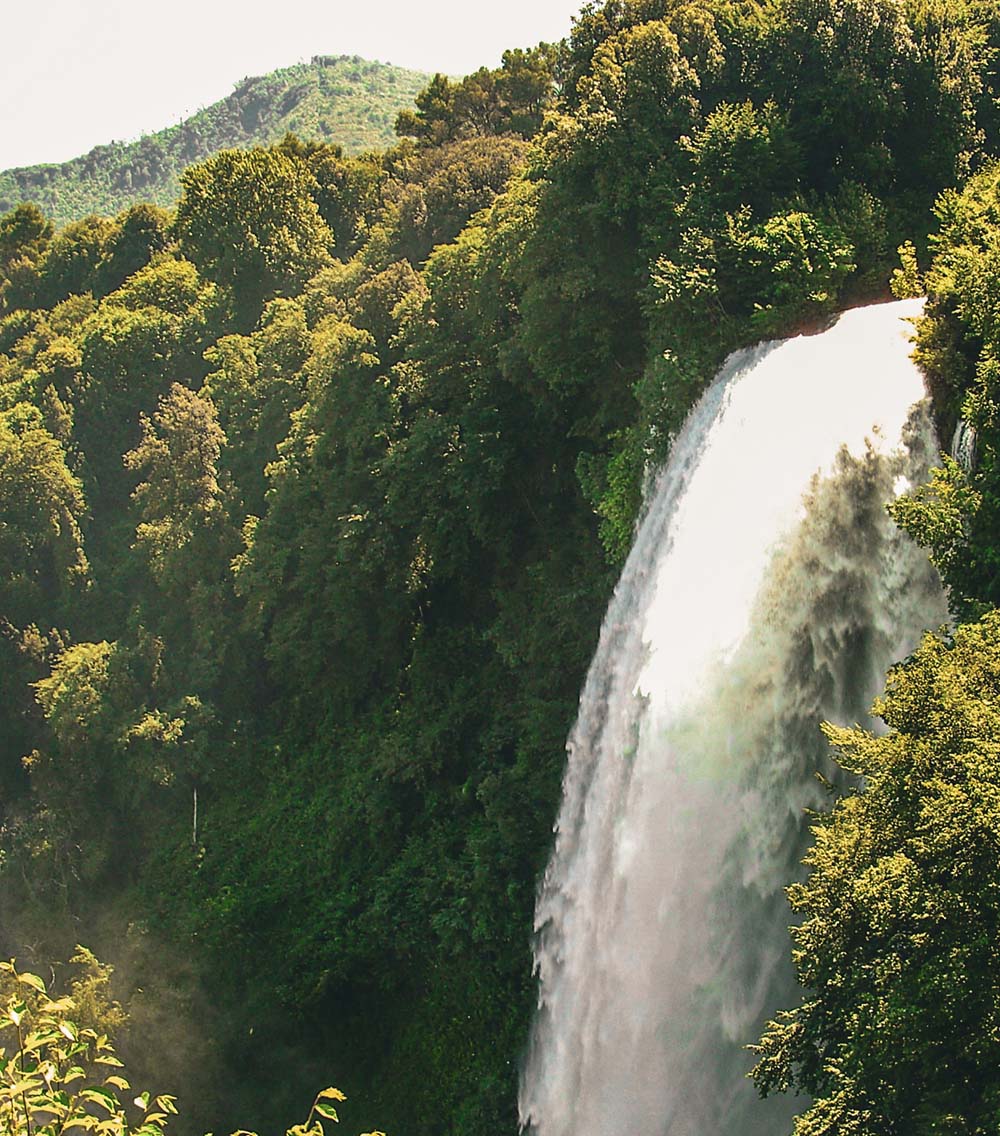
The Marmore waterfalls are situated just outside of Terni and can be reached from Orvieto in about an hour. These are the outcomes of the Velino River leaping to the Nera River below. Velino’s 170-meter jump makes it the tallest waterfall in Europe. Five separate, varyingly challenging pathways are available in the green area around the waterfall. They provide broad, vivid vistas and let you stroll alongside the ocean. The wildest rafting, for those who like adventure, begins directly at the base of the cascade and goes down the river.
Savor a meal in Tufa caverns below downtown Orvieto, where the two windows provide stunning views of the rolling landscape. Simple grilled meats, veggies, and pizzas make up the consistently excellent traditional Umbrian cuisine. Remarkably, the vast wine list—which includes several rare vintages and premium Italian and local labels—outperforms the cuisine.
This friendly family-run restaurant is located in a 14th-century medieval structure with arched ceilings, yet it has an ultra-contemporary appearance along a bustling pedestrian street close to the Duomo. Their strongly flavored recipes employ items from the Martinelli family, such as pasta, olive oil, and balsamic vinegar. They also have their well-acclaimed Montefalco wines available for tasting.
This little, rustic-style trattoria is housed in a cozy domed, plant-filled dining room with white walls covered with paintings, antique vases, and other trinkets. Its handmade pasta is well-regarded; try it with a sauce of wild boar, duck, or artichokes. Good roast lamb, veal, and hog are also served, and Orvieto’s best pasticceria (pastry store) provides the sweets.
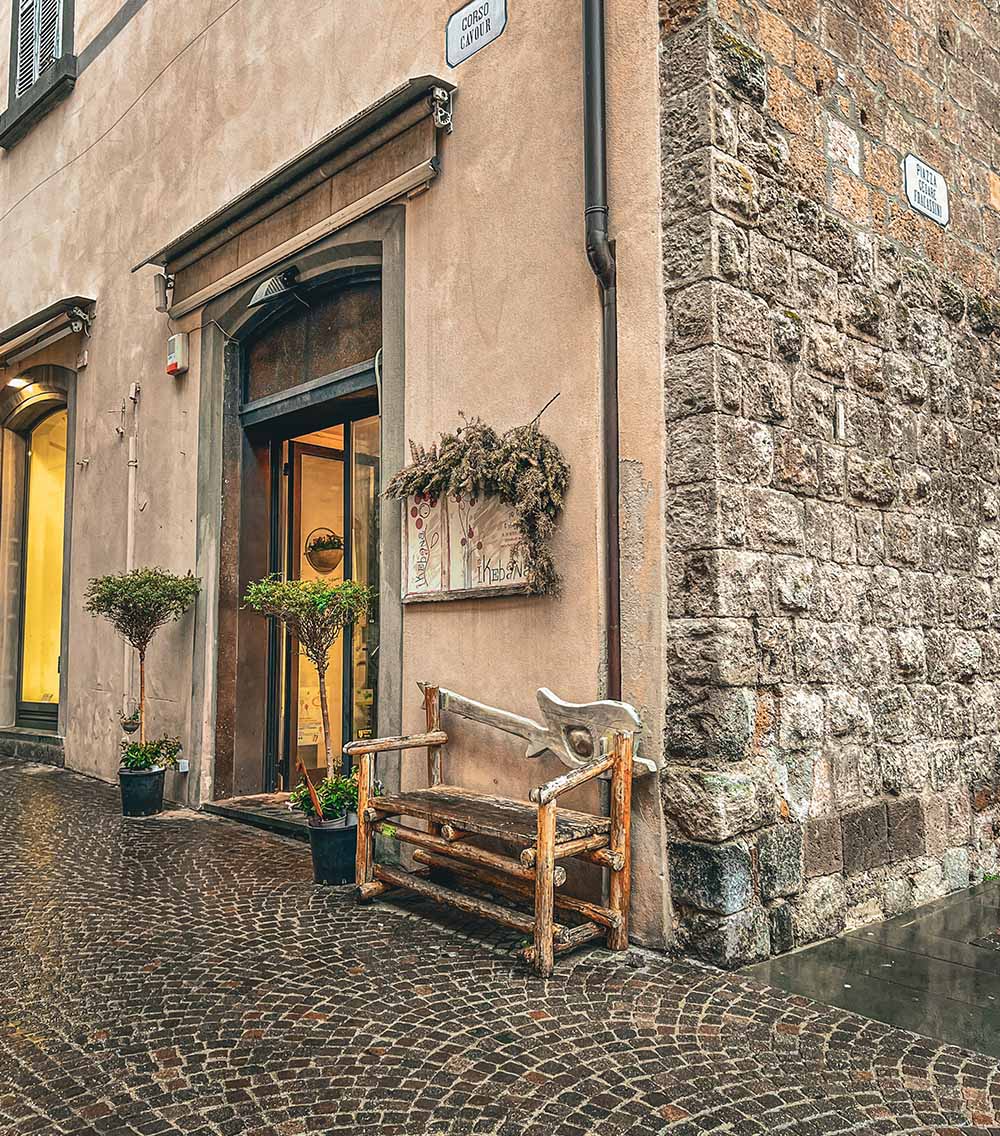
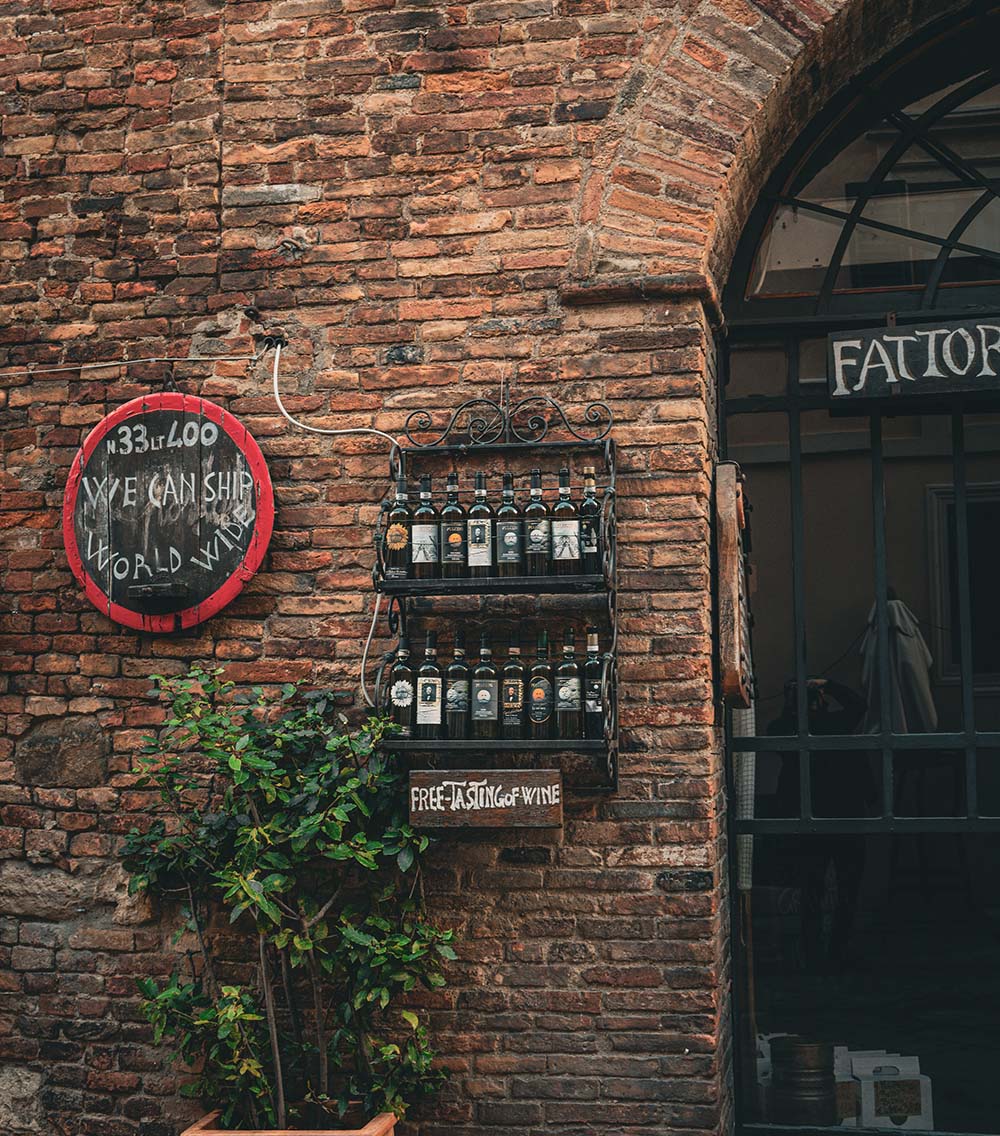
A stunning 14th-century monastery converted to an eco-hotel that provides a novel idea of mental cleansing in a remote valley deep in the Umbrian countryside for lone travelers and spirit searchers. Single “cellulase” rooms (few doubles are available) are furnished to the very minimum. There will be hand-embroidered hemp linens, an iron bedstead, a desk made of stone, a basic restroom, and Gregorian chanting for background music.
A beautiful hillside townhouse B&B with excellent views of the surrounding countryside and town. There are either kitchenettes in the suites or double rooms, all elegantly rustic-chic with pastel-hued furnishings, feminine antiques, and flowery textiles. Warm and romantic foundation.
The Umbrian countryside, albeit less well-known than its equivalent in central Italy, is a lush and peaceful destination for tourists that may match Tuscany in terms of picturesque fields and undulating hills. With so many lakes and woods, it’s a wonderful place to get away from it all, and energetic tourists will love the chance to go on long, meandering walks. In Castel Giorgio, Umbria, is the privately owned Borgo La Chiaracia. Situated on expansive, lush grounds, the hotel has combined cutting-edge contemporary technology in the suites with the finest of regional architectural heritage. The rich Italian linens and timbered roofs are beloved by the guests.
The Umbrian area generally has a Mediterranean-like climate. The best time to visit is late Spring – early Summer and Autumn. The temperatures are milder and you will avoid the crowds,
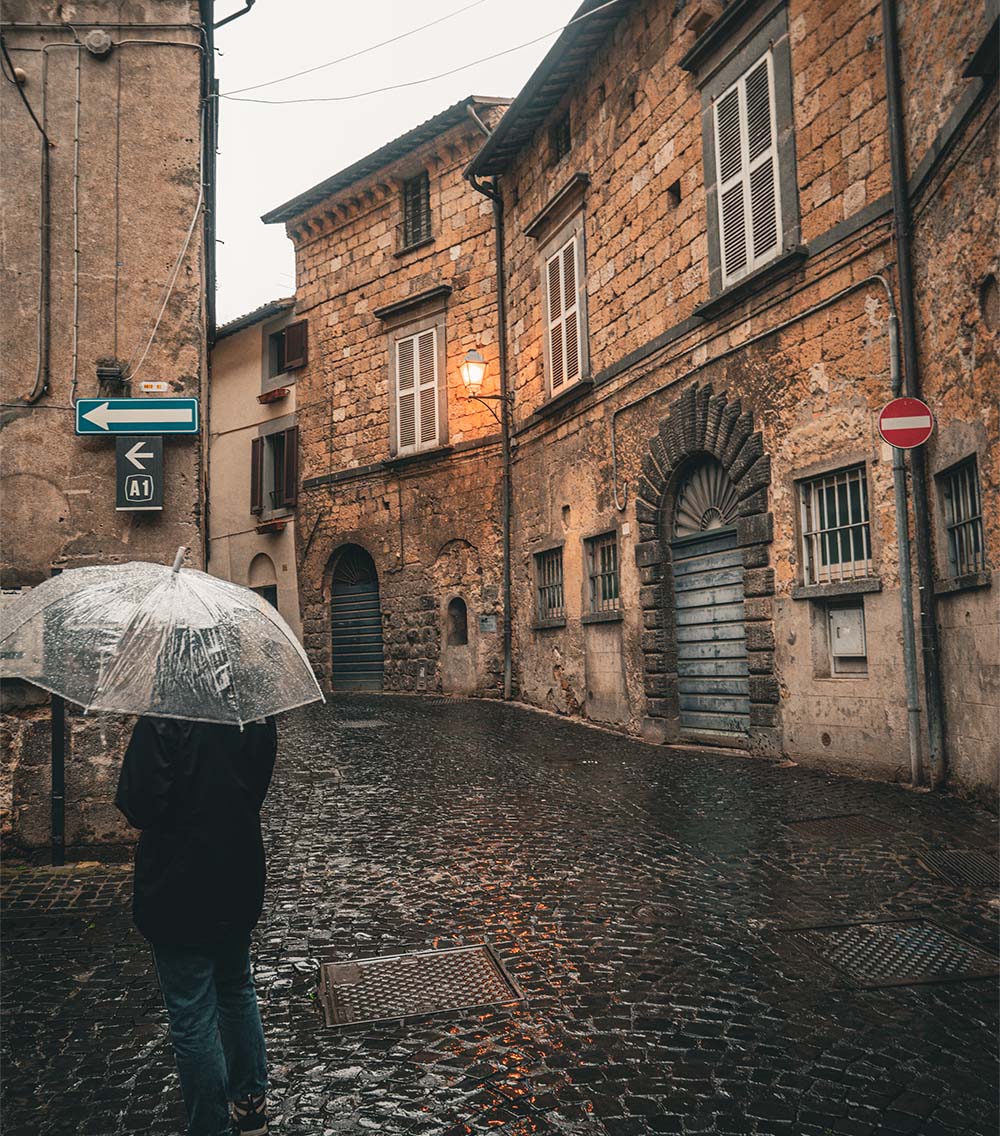
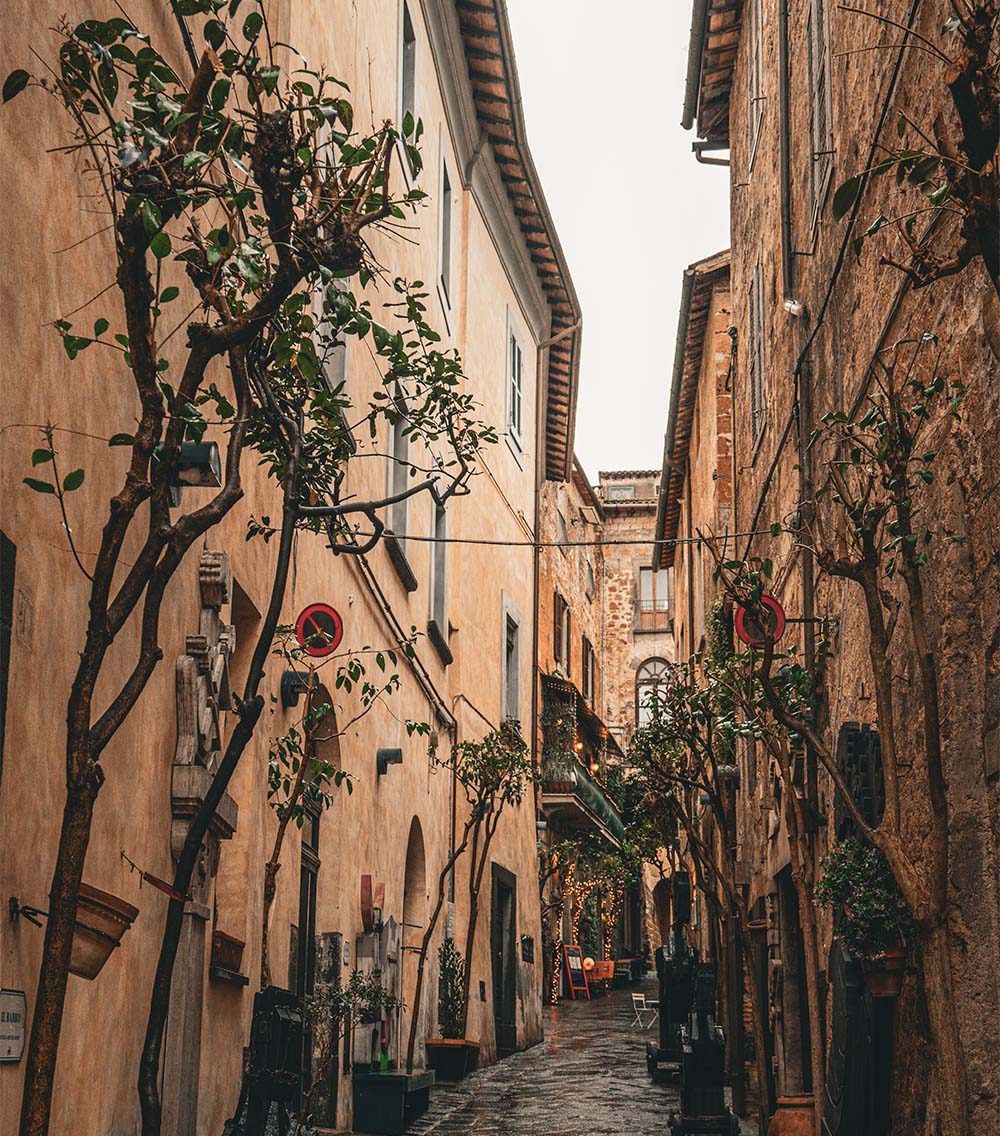
While you may see all of Orvieto’s major sights in a single day, a more leisurely visit is made with one or two nights there.
Indeed, the rich history, magnificent cathedral, subterranean caverns, and breathtaking vistas of the Umbrian landscape make Orvieto well worth seeing.
Famous features of Orvieto include the stunning Duomo (cathedral), Etruscan history, subterranean caverns, and Orvieto Classico wine.
The main attractions may be seen in a whole day, although a stay over one or two nights is best.
Indeed, Orvieto is a fairly walkable city, with most of the sights situated in the small city center close to one another.




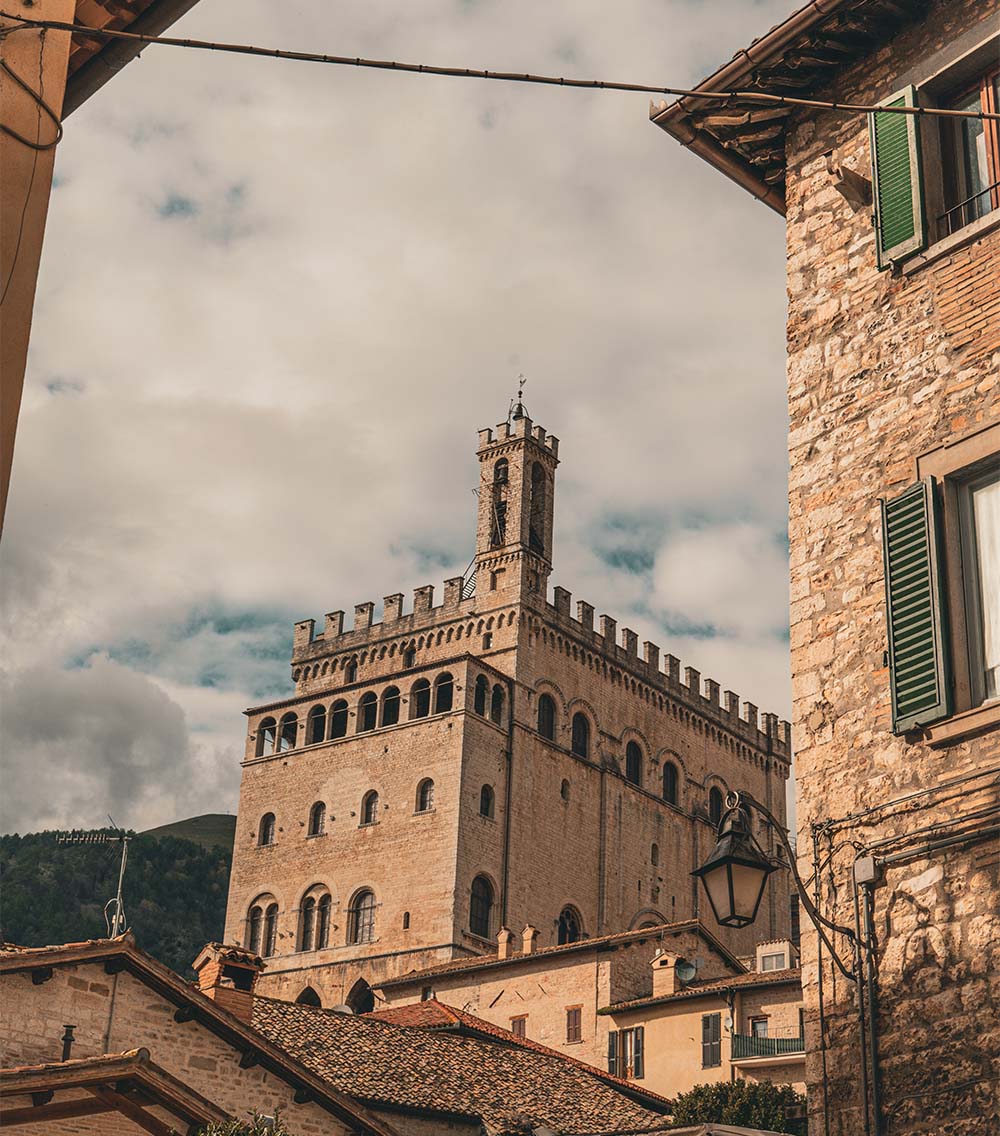
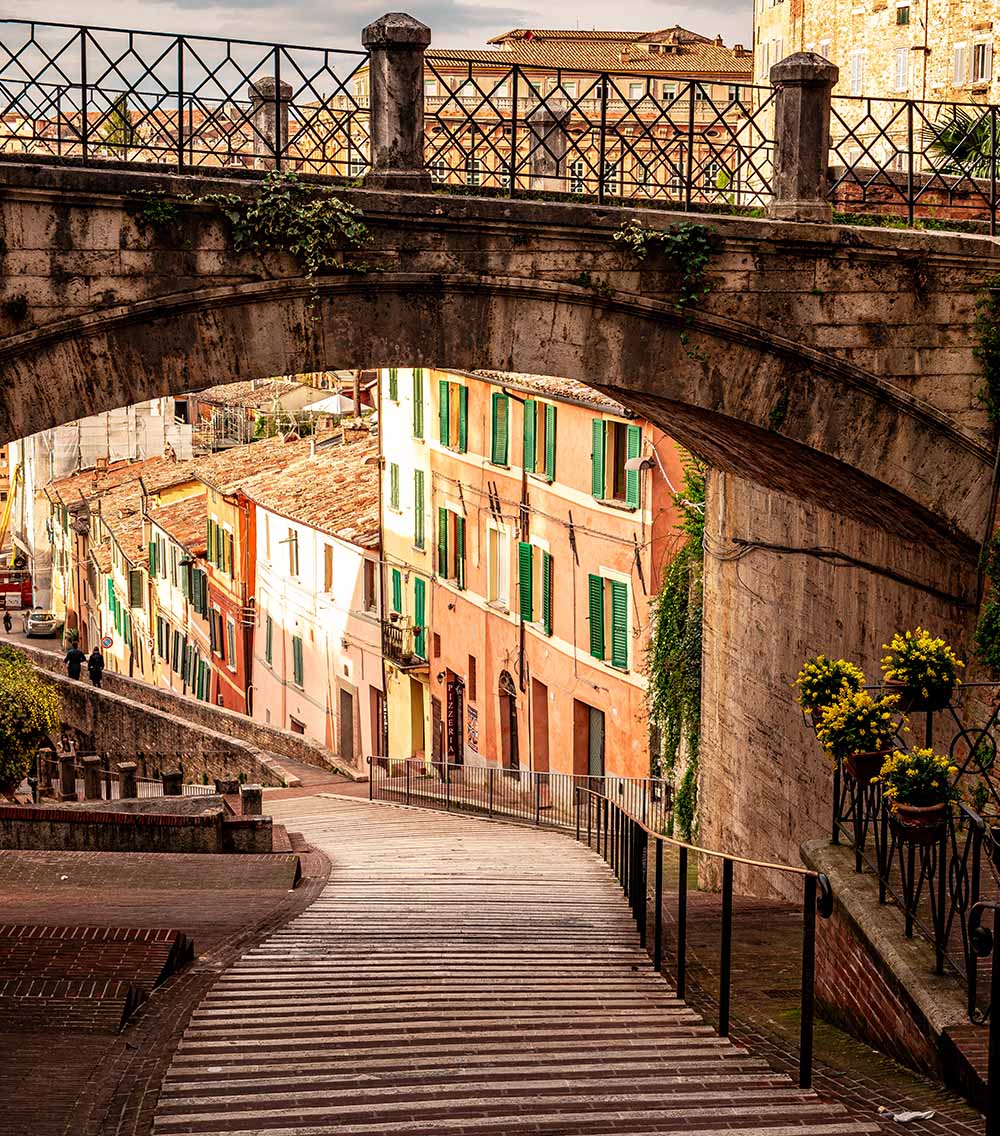
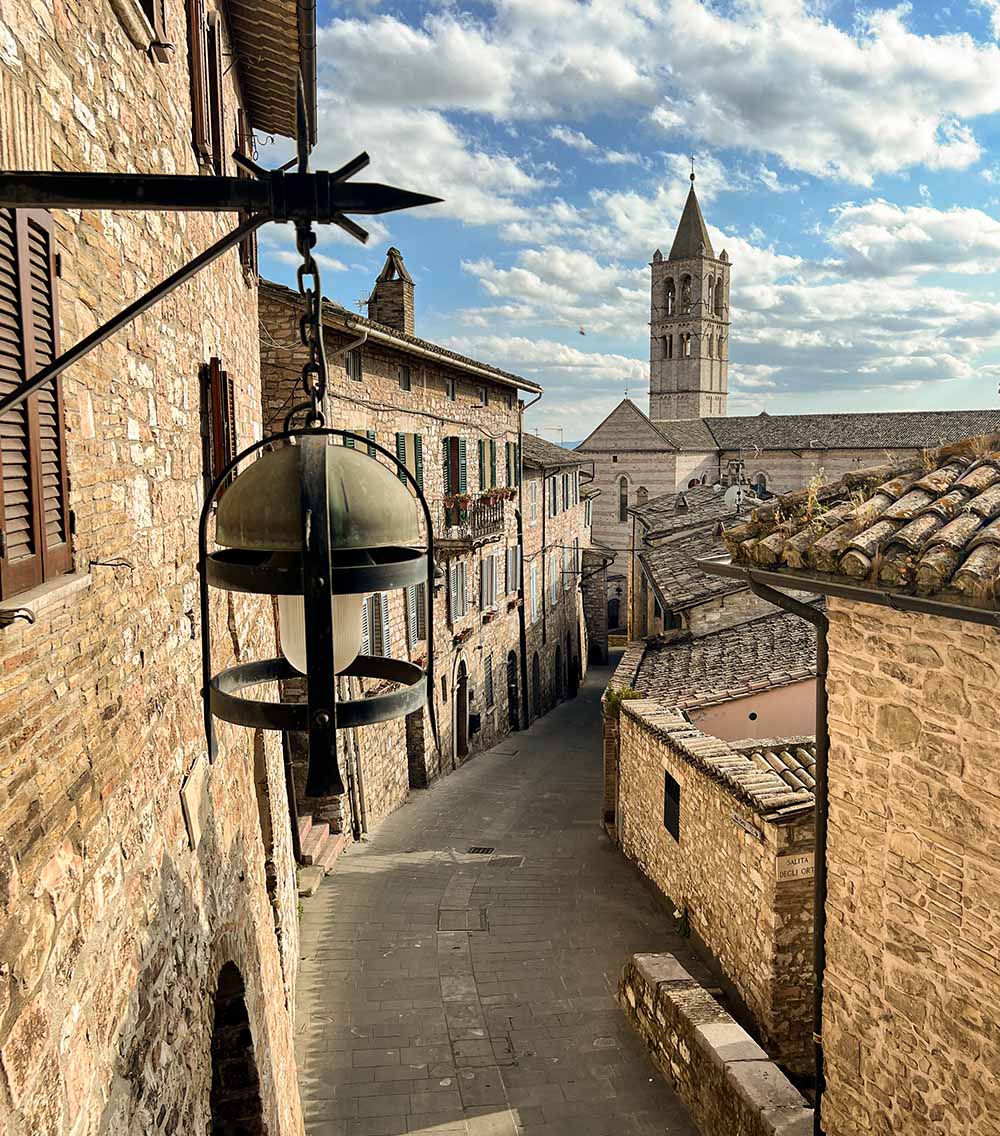
No Comments